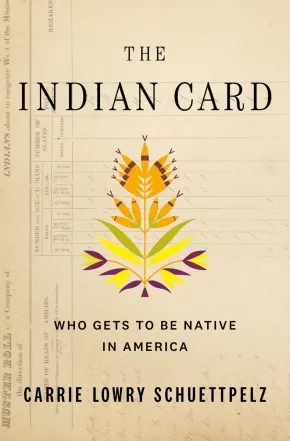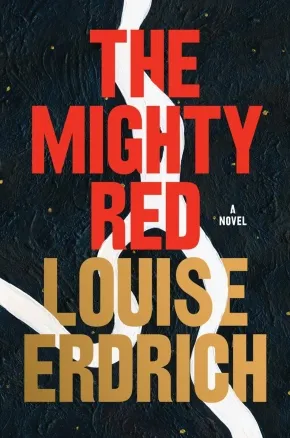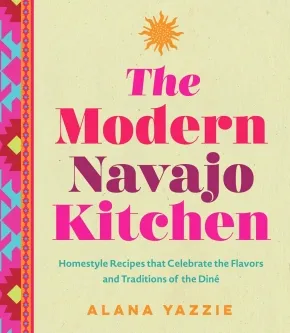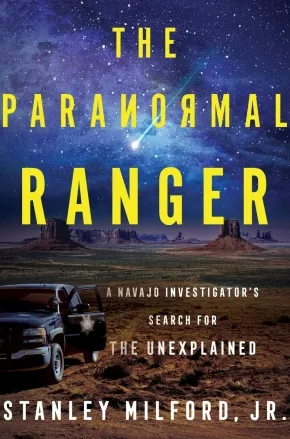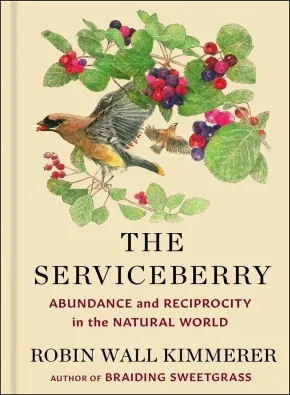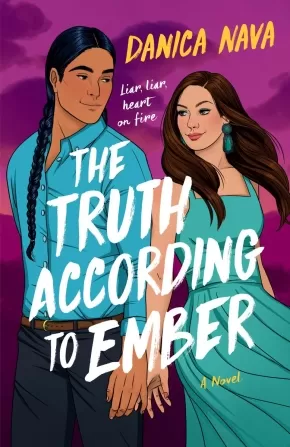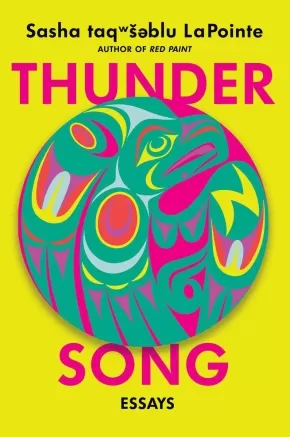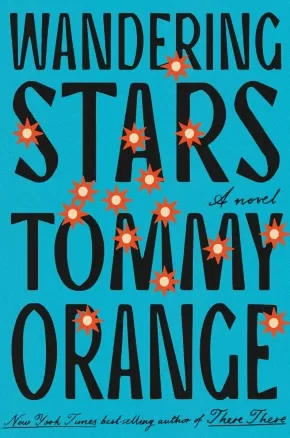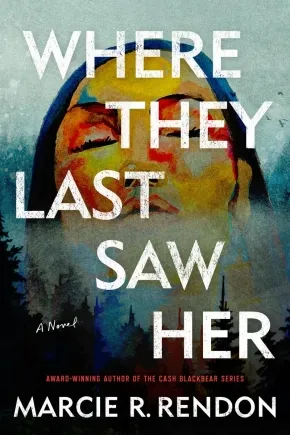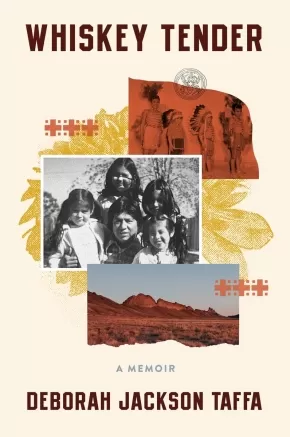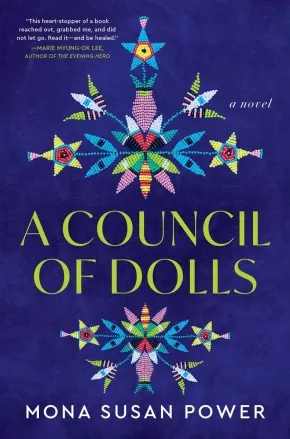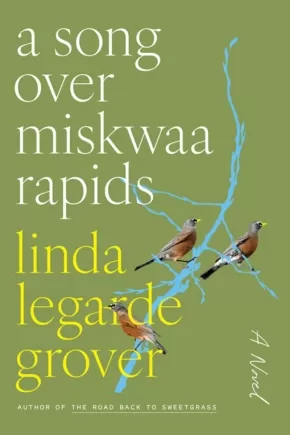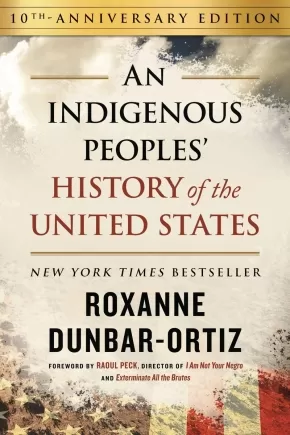
Native American
76
-
90
of
266 Results;
Sort By
Go To
of 18
The Indian Card: Who Gets to Be Native in America
$39.99
Format:
Hardcover
Text Content Territories:
Indigenous American; Native American; Lumbee;
Reading Level: n/a
ISBN / Barcode: 9781250903167
Synopsis:
Synopsis:
A groundbreaking and deeply personal exploration of Tribal enrollment, and what it means to be Native American in the United States
Who is Indian enough?
To be Native American is to live in a world of contradictions. At the same time that the number of people in the US who claim Native identity has exploded—increasing 85 percent in just ten years—the number of people formally enrolled in Tribes has not. While the federal government recognizes Tribal sovereignty, being a member of a Tribe requires navigating blood quantum laws and rolls that the federal government created with the intention of wiping out Native people altogether. Over two million Native people are tribally enrolled, yet there are Native people who will never be. Native people who, for a variety of reasons ranging from displacement to disconnection, cannot be card-carrying members of their Tribe.
In The Indian Card, Carrie Lowry Schuettpelz grapples with these contradictions. Through in-depth interviews, she shares the stories of people caught in the mire of identity-formation, trying to define themselves outside of bureaucratic processes. With archival research, she pieces together the history of blood quantum and tribal rolls and federal government intrusion on Native identity-making. Reckoning with her own identity—the story of her enrollment and the enrollment of her children—she investigates the cultural, racial, and political dynamics of today’s Tribal identity policing. With this intimate perspective of the ongoing fight for Native sovereignty, The Indian Card sheds light on what it looks like to find a deeper sense of belonging.
Reviews
“The Indian Card is a candid, unflinching look at the sometimes subtle, sometimes ruthless ways federal policies undermine Indigenous culture and society. Carrie Schuettpelz understands first-hand how official tribal membership rations not only access to benefits such as healthcare and housing stipends, but also an ineffable sense of belonging. Her thorough excavation of the painful history that gave rise to rigid enrollment policies is a courageous gift to our understanding of contemporary Native life.”– The Whiting Foundation Jury's Note
"The Indian Card is all at once an intimate portrait, a sweeping history and a thoughtful examination of tribal identity, Native sovereignty and the quest for belonging."—WBUR
"Carrie’s book is so dang good you need to get two copies: one for you and then the other for a friend. Schuettpelz, with so much research and interviews, shares the stories of people caught in the mire of identity-formation with such ease. The voice is pitch perfect, there is not one wrong word and the content is written with so much grace and elegance and honesty you can’t help but finish Schuettpelz’s work knowing it will live on for as long as it takes to unravel the many, many contradictions surrounding what it means to Native American today." - Morgan Talty, author of Fire Exit
"A well researched book for readers who are curious or confused about complex kinship relationships in Native America. Armed with personal experience, interviews, and scholarly data, Carrie Lowry Schuettpelz tackles the political nature of Indigenous identity with clarity and concision."—Deborah Taffa, author of Whiskey Tender
"Illuminating...An innovative exploration of a thorny issue." —Publishers Weekly, starred review
"A clear and frank analysis of the challenges that define Native selfhood." —Kirkus Reviews
Additional Information
304 pages | 6.12" x 9.25" | includes 10-12 charts/figures and captions throughout | Hardcover
The Mighty Red: A Novel
$25.99
Format:
Paperback
Text Content Territories:
Indigenous American;
Reading Level: N/A
ISBN / Barcode: 9780063419353
Synopsis:
Synopsis:
In this stunning novel, Pulitzer Prize and National Book Award–winning author Louise Erdrich tells a story of love, natural forces, spiritual yearnings, and the tragic impact of uncontrollable circumstances on ordinary people’s lives.
History is a flood. The mighty red . . .
In Argus, North Dakota, a collection of people revolve around a fraught wedding.
Gary Geist, a terrified young man set to inherit two farms, is desperate to marry Kismet Poe, an impulsive, lapsed Goth who can't read her future but seems to resolve his.
Hugo, a gentle red-haired, home-schooled giant, is also in love with Kismet. He’s determined to steal her and is eager to be a home wrecker.
Kismet's mother, Crystal, hauls sugar beets for Gary's family, and on her nightly runs, tunes into the darkness of late-night radio, sees visions of guardian angels, and worries for the future, her daughter’s and her own.
Human time, deep time, Red River time, the half-life of herbicides and pesticides, and the elegance of time represented in fracking core samples from unimaginable depths, is set against the speed of climate change, the depletion of natural resources, and the sudden economic meltdown of 2008-2009. How much does a dress cost? A used car? A package of cinnamon rolls? Can you see the shape of your soul in the everchanging clouds? Your personal salvation in the giant expanse of sky? These are the questions the people of the Red River Valley of the North wrestle with every day.
The Mighty Red is a novel of tender humor, disturbance, and hallucinatory mourning. It is about on-the-job pains and immeasurable satisfactions, a turbulent landscape, and eating the native weeds growing in your backyard. It is about ordinary people who dream, grow up, fall in love, struggle, endure tragedy, carry bitter secrets; men and women both complicated and contradictory, flawed and decent, lonely and hopeful. It is about a starkly beautiful prairie community whose members must cope with devastating consequences as powerful forces upend them. As with every book this great modern master writes, The Mighty Red is about our tattered bond with the earth, and about love in all of its absurdity and splendor.
A new novel by Louise Erdrich is a major literary event; gorgeous and heartrending, The Mighty Red is a triumph.
Reviews
"A love triangle is at the heart of this novel, set against the backdrop of a beet farm in North Dakota during the economic meltdown of 2008-2009. It's as much about the financial crash and environmental destruction as it is about the people most impacted by and vulnerable to these devastations." — New York Times
"While the novel touches on tragedy, it also includes scenes of sheer comedic delight. No one describes a book-group meeting better than Erdrich. Pulitzer Price and National Book Award winner Erdrich (The Sentence) yet again displays her storytelling skills." — Library Journal (starred review)
"[A] finely woven tale of anguish and desire, crimes and healing. With irresistible characters, dramatic predicaments, crisp wit, gorgeously rendered settings, striking ecological facts, and a cosmic dimension, Erdrich’s latest tale of the plains reverberates with arresting revelations." — Booklist
Educator Information
The Mighty Red is a standalone novel, but it's also a sequel to Louise's 1986 novel The Beet Queen. It takes place in Argus, North Dakota, the same fictional town where many of her other novels are set.
Additional Information
384 pages | 6.00" x 9.00" | Paperback
The Modern Navajo Kitchen: Homestyle Recipes that Celebrate the Flavors and Traditions of the Diné
$32.99
Format:
Hardcover
Text Content Territories:
Indigenous American; Native American; Navajo (Diné);
Reading Level: N/A
ISBN / Barcode: 9781577154679
Synopsis:
Synopsis:
Nourish your body and mind through food with these 60 recipes celebrating Navajo culinary traditions.
The Modern Navajo Kitchen takes you on an exhilarating journey for your taste buds. This beautifully photographed cookbook ties together traditional Navajo recipes as well as global recipes with a Navajo spin, creating a truly unique culinary experience! Choose from a plethora of drinks, breads, breakfasts, soups, mains, sides, and desserts—the sky’s the limit.
Incorporating traditional and modern ingredients, some of the deliciously nourishing and comforting recipes include:
- Navajo Boba Milk Tea (Abe’ Boba Dééhk’azí)
- Fry Bread (Dah Díníilghaazh)
- Navajo Burgers (Atsį’ Yik’ą́ Náneeskadí Bił Ałch’į’ Át’éhí)
- Sumac and Strawberry Greek Yogurt Ice Pops (Chiiłchin Yogurt Tiní)
- and more!
This comprehensive cookbook also includes instructions for how to make such things as juniper ash, roasted cornmeal, and roasted chiles that will bring your Navajo cooking skills to the next level. A short history of Navajo culinary traditions is provided to provide cultural context behind your new culinary experiences, and sample meal plans will help you put together the perfect menus for the week ahead or for those special occasions with family and friends.
Reconnect to your cultural heritage or treat your palate (or both!) with The Modern Navajo Kitchen.
Additional Information
192 pages | 8.00" x 9.50" | Colour Photos | Hardcover
The Paranormal Ranger: A Navajo Investigator's Search for the Unexplained (HC) (5 in Stock)
$35.99
Format:
Hardcover
Text Content Territories:
Indigenous American; Native American; Cherokee; Navajo (Diné);
Reading Level: N/A
ISBN / Barcode: 9780063371057
Synopsis:
Synopsis:
A Navajo Ranger’s chilling and clear-eyed memoir of his investigations into bizarre cases of the paranormal and unexplained in Navajoland
As a Native American with parents of both Navajo and Cherokee descent, Stanley Milford Jr. grew up in a world where the supernatural was both expected and taboo, where shapeshifters roamed, witchcraft was a thing to be feared, and children were taught not to whistle at night.
In his youth, Milford never went looking for the paranormal, but it always seemed to find him. When he joined the fabled Navajo Rangers—a law enforcement branch of the Navajo Nation who are equal parts police officers, archeological conservationists, and historians—the paranormal became part of his job. Alongside addressing the mundane duties of overseeing the massive 27,000-square-mile reservation, Milford was assigned to utterly bizarre and shockingly frequent cases involving mysterious livestock mutilations, skinwalker and Bigfoot sightings, UFOs, and malicious hauntings.
In The Paranormal Ranger, Milford recounts the stories of these cases from the clinical and deductive perspective of a law enforcement officer. Milford’s Native American worldview and investigative training collide to provide an eerie account of what logic dictates should not be possible.
Reviews
“Stanley Milford Jr. masterfully intertwines memoir, Diné creation stories, and true encounters with otherworldly phenomena. As a Navajo Ranger, Milford’s path is shadowed by eerie cryptids, mysterious UFOs, and the ever-present trials of his demanding role. His unwavering dedication, bravery, and deep cultural insight transform this narrative into a mesmerizing journey. Bridging the realms of legend and reality, each spine-chilling investigation illuminates the enduring spirit and wisdom of the Navajo people, offering readers a profound and unforgettable cultural experience.”— Shane Hawk, co-editor of Never Whistle at Night: An Indigenous Dark Fiction Anthology
“Stan’s life story is a true testament to the reverence that Native American culture has for the paranormal. His passion for investigating the otherworldly really shines. A fascinating read, and highly recommended!” — Steve Gonsalves, star of Ghost Hunters and bestselling author of A Life with Ghosts
“Many of Stan’s experiences recounted in this book parallel what we’ve seen on Skinwalker Ranch, with an eerie degree of similarity. Getting to learn more about Stan’s life and his Navajo-Cherokee heritage alongside these incredible stories is a meaningful bonus.” — Jim Morse, ranch manager and cast member of The Secret of Skinwalker Ranch
"Milford interweaves colorful stories from Navajo mythology that illuminate cultural beliefs about the origins of life, monsters, and the spirit world. . . . Engaging reading for adventurous minds." — Kirkus Reviews
"Equal parts memoir and supernatural record, Milford's book shares how these occurrences enlightened him. He leaves the reader with a unified theory of how paranormal phenomena are connected and what this means for us as human beings. And he demonstrates how experience and open-mindedness can, over a lifetime, build up to unparalleled expertise." — Booklist
Additional Information
256 pages | 6.00" x 9.00" | Hardcover
The Serviceberry: Abundance and Reciprocity in the Natural World
$25.00
Format:
Hardcover
Text Content Territories:
Indigenous American;
ISBN / Barcode: 9781668072240
Synopsis:
Synopsis:
From the #1 New York Times bestselling author of Braiding Sweetgrass, a bold and inspiring vision for how to orient our lives around gratitude, reciprocity, and community, based on the lessons of the natural world.
As Indigenous scientist and author of Braiding Sweetgrass Robin Wall Kimmerer harvests serviceberries alongside the birds, she considers the ethic of reciprocity that lies at the heart of the gift economy. How, she asks, can we learn from Indigenous wisdom and the plant world to reimagine what we value most? Our economy is rooted in scarcity, competition, and the hoarding of resources, and we have surrendered our values to a system that actively harms what we love. Meanwhile, the serviceberry’s relationship with the natural world is an embodiment of reciprocity, interconnectedness, and gratitude. The tree distributes its wealth—its abundance of sweet, juicy berries—to meet the needs of its natural community. And this distribution insures its own survival. As Kimmerer explains, “Serviceberries show us another model, one based upon reciprocity, where wealth comes from the quality of your relationships, not from the illusion of self-sufficiency.”
As Elizabeth Gilbert writes, Robin Wall Kimmerer is “a great teacher, and her words are a hymn of love to the world.” The Serviceberry is an antidote to the broken relationships and misguided goals of our times, and a reminder that “hoarding won’t save us, all flourishing is mutual.”
Reviews
“Robin Wall Kimmerer is writer of rare grace. She writes about the natural world from a place of such abundant passion that one can never quite see the world the same way after having seen it through Kimmerer’s eyes. In Braiding Sweetgrass, she takes us on a journey that is every bit as mythic as it is scientific, as sacred as it is historical, as clever as it is wise. She is a great teacher, and her words are a hymn of love to the world.” —Elizabeth Gilbert
“Robin Wall Kimmerer has written an extraordinary book, showing how the factual, objective approach of science can be enriched by the ancient knowledge of the indigenous people. It is the way she captures beauty that I love the most—the images of giant cedars and wild strawberries, a forest in the rain and a meadow of fragrant sweetgrass will stay with you long after you read the last page.” —Jane Goodall
“I give daily thanks for Robin Wall Kimmerer for being a font of endless knowledge, both mental and spiritual.”—Richard Powers, The New York Times
“Robin Wall Kimmerer opens a sense of wonder and humility for the intelligence in all kinds of life we are used to naming and imagining as inanimate.” —Krista Tippett, host of On Being
Additional Information
112 pages | 5.00" x 7.00" | Hardcover
The Seventh Direction Teacher Lesson Plan
$7.99
Artists:
Text Content Territories:
Indigenous American; Native American; Sioux; Lakota; Indigenous Canadian; First Nations; Sioux; Lakota;
ISBN / Barcode: 9781778540325
Synopsis:
Synopsis:
A teacher lesson plan that accompanies the book, The Seventh Direction. Includes comprehension questions, group activities, colouring pages, and more. In this enlightening legend shared by Lakota Elder Kevin Locke, Wakhan Thanka (The Great Spirit) created the entire world in seven days; leaving the most precious creation for last. In order to protect this precious creation, Wakhan Thanka needed to hide it where it would always be safe and turned to our animal relatives for help. Together, they found the perfect place. Do you know where they chose?
Educator Information
This lesson plan accompanies the book The Seventh Direction: A Legend of Creation.
This lesson plan is available in French: La septième direction Plan de cours
Additional Information
12 pages | 8.75" x 11.00" | Paper Packet
The Truth According to Ember
$25.99
Format:
Paperback
Text Content Territories:
Indigenous American; Native American; Chickasaw;
Reading Level: N/A
ISBN / Barcode: 9780593642603
Synopsis:
Synopsis:
A Chickasaw woman who can’t catch a break serves up a little white lie that snowballs into much more in this witty and irresistible rom-com by debut author Danica Nava.
Ember Lee Cardinal has not always been a liar—well, not for anything that counted at least. But her job search is not going well and when her resumé is rejected for the thirty-seventh time, she takes matters into her own hands. She gets “creative” listing her qualifications and answers the ethnicity question on applications with a lie—a half-lie, technically. No one wanted Native American Ember, but white Ember has just landed her dream accounting job on Park Avenue (Oklahoma City, that is).
Accountant Ember thrives in corporate life—and her love life seems to be looking up too: Danuwoa Colson, the IT guy and fellow Native who caught her eye on her first day, seems to actually be interested in her too. Despite her unease over the no-dating policy at work, they start to see each other secretly, which somehow makes it even hotter? But when they're caught in a compromising position on a work trip, a scheming colleague blackmails Ember, threatening to expose their relationship. As the manipulation continues to grow, so do Ember’s lies. She must make the hard decision to either stay silent or finally tell the truth, which could cost her everything.
Reviews
“The Truth According to Ember is a truly funny and wonderfully heartfelt comedy of errors with a plucky, lovable heroine I rooted for from page one. Danica Nava is a fresh, exciting new voice in the world of romantic comedies and I can’t wait to see what she does next.”—Emily Henry, #1 New York Times bestselling author of Happy Place
"My heart was in my stomach as I watched Ember weave herself a tangled web and have to figure her way out. Danica Nava's The Truth According to Ember gives us a fresh, relatable heroine in Ember, who has been so focused on helping everyone else that she doesn't always know how to ask for help herself. And Danuwoa! No wonder Ember blushes every time the swoony IT technician tells her to unplug it and plug it back in. This book provided the perfect escape mixed with the perfect amount of grounded reality, bringing the characters to life."—Alicia Thompson, USA Today bestselling author of With Love, from Cold World
"Danica Nava has created a fantastic heroine in Ember Lee Cardinal, whose good heart and determination to do the right thing are as admirable as her occasional lies are understandable...Nava guides Ember along a compelling journey of empowerment while tackling complicated issues of identity, racism, corporate corruption, and the pain and joy that family can bring. And the book is so funny, too! The characters shine, each of them unique and interesting and so real they could step off the page. The Truth According to Ember was a delight from start to finish, and Nava delves into both heartbreaking and life-affirming topics with wit and wisdom. Danica Nava's writing is fresh, funny, and romantic, and I will read anything she writes."—Sarah Hawley, author of A Werewolf's Guide to Seducing a Vampire
“Fresh, funny, and full of heart, The Truth According to Ember delivers a romantic comedy delight. Ember is lovable and laugh-out-loud hilarious, and her journey as she learns to lean into the support of her community, discovers unconditional love, and embraces the power of telling her truth, is wonderfully touching. This is a romance I won’t soon forget.”—Chloe Liese, USA Today bestselling author of Always Only You
Additional Information
384 pages | 5.18" x 8.00" | Paperback
Thunder Song: Essays (HC) (3 in Stock)
$35.00
Format:
Hardcover
Text Content Territories:
Indigenous American; Native American; Salish; Coast Salish; Nooksack; Upper Skagit;
Reading Level: N/A
ISBN / Barcode: 9781640096356
Synopsis:
Synopsis:
The author of the award-winning memoir Red Paint returns with a razor-sharp, clear-eyed collection of essays on what it means to be a proudly queer indigenous woman in the United States today
Drawing on a rich family archive as well as the anthropological work of her late great-grandmother, Sasha taqʷšəblu LaPointe explores themes ranging from indigenous identity and stereotypes to cultural displacement and environmental degradation to understand what our experiences teach us about the power of community, commitment, and conscientious honesty.
Unapologetically punk, the essays in Thunder Song segue from the miraculous to the mundane, from the spiritual to the physical, as they examine the role of art—in particular music—and community in helping a new generation of indigenous people claim the strength of their heritage while defining their own path in the contemporary world.
Reviews
"Blending beautiful family history with her own personal memories, LaPointe’s writing is a ballad against amnesia, and a call to action for healing, for decolonization, for hope." —Lauren Puckett-Pope, Elle
“It’s a provocative and wonderfully crafted collection exploring cultural legacies, colonialism, and finding your own path forward.” —Susie Dumond, BookRiot
"Lyrical prose elevates LaPointe’s incisive and heartfelt personal reflections. The result is a beautifully rendered snapshot of contemporary American Indigenous life." —Publishers Weekly
"These passionate essays, adamant in their activist pleas, reflect hard-won wisdom, as well as the representative significance of the author’s experiences. Probing and poignant reflections on Indigenous America." —Kirkus Reviews
“Sasha taqʷšəblu LaPointe’s essays in Thunder Song are loud, bold, and startlingly majestic. None of Sasha’s examinations fail to find truth: page after page, the intersections of family, heritage, history, and music build to countless transcendental moments for the reader, which is not only the magic of this book but a clear testament to Sasha’s immense storytelling power. She is a major talent. Thunder Song is masterful and wise, and it will not be forgotten.” ––Morgan Talty, National Bestselling author of Night of the Living Rez
Additional Information
256 pages | 5.36" x 8.30" | Hardcover
Wandering Stars: A Novel (HC) (2 in Stock)
$35.00
Format:
Hardcover
Text Content Territories:
Indigenous American; Native American; Arapaho; Cheyenne;
Reading Level: N/A
ISBN / Barcode: 9780771050367
Synopsis:
Synopsis:
The eagerly awaited follow-up to Pulitzer Prize finalist Tommy Orange’s breakout best seller There There—winner of the PEN/Hemingway Award, the John Leonard Prize, the American Book Award, and one of the New York Times Ten Best Books of the Year—Wandering Stars traces the legacies of the Sand Creek Massacre of 1864 and the Carlisle Industrial School for Indians through to the shattering aftermath of Orvil Redfeather’s shooting in There There.
Colorado, 1864. Star, a young survivor of the Sand Creek Massacre, is brought to the Fort Marion Prison Castle, where he is forced to learn English and practice Christianity by Richard Henry Pratt, an evangelical prison guard who will go on to found the Carlisle Industrial School for Indians, an institution dedicated to the eradication of Native history, culture, and identity. A generation later, Star’s son, Charles, is sent to the school, where he is brutalized by the man who was once his father’s jailer. Under Pratt’s harsh treatment, Charles clings to moments he shares with a young fellow student, Opal Viola, as the two envision a future away from the institutional violence that follows their bloodline.
Oakland, 2018. Opal Viola Victoria Bear Shield is barely holding her family together after the shooting that nearly took the life of her nephew Orvil. From the moment he awakens in his hospital bed, Orvil begins compulsively googling school shootings on YouTube. He also becomes emotionally reliant on the prescription medications meant to ease his physical trauma. His younger brother Lony, suffering from PTSD, is struggling to make sense of the carnage he witnessed at the shooting by secretly cutting himself and enacting blood rituals which he hopes will connect him to his Cheyenne heritage. Opal is equally adrift, experimenting with Ceremony and peyote, searching for a way to heal her wounded family.
Extending his constellation of narratives into the past and future, Tommy Orange once again delivers a story that is by turns shattering and wondrous, a book piercing in its poetry, sorrow, and rage—a masterful follow-up to his already—classic first novel, and a devastating indictment of America’s war on its own people.
Additional Information
336 pages | 5.50" x 8.25" | Hardcover
Where They Last Saw Her: A Novel
$24.95
Format:
Paperback
Text Content Territories:
Indigenous American; Native American;
Reading Level: N/A
ISBN / Barcode: 9780593974872
Synopsis:
Synopsis:
From the award-winning author of the Cash Blackbear series comes a compelling novel of a Native American woman who learns of the disappearance of one of her own and decides enough is enough.
All they heard was her scream.
Quill has lived on the Red Pine reservation in Minnesota her whole life. She knows what happens to women who look like her. Just a girl when Jimmy Sky jumped off the railway bridge and she ran for help, Quill realizes now that she’s never stopped running. As she trains for the Boston Marathon early one morning in the woods, she hears a scream. When she returns to search the area, all she finds are tire tracks and a single beaded earring.
Things are different now for Quill than when she was a lonely girl. Her friends Punk and Gaylyn are two women who don’t know what it means to quit; her loving husband, Crow, and their two beautiful children challenge her to be better every day. So when she hears a second woman has been stolen, she is determined to do something about it—starting with investigating the group of men working the pipeline construction just north of their homes.
As Quill closes in on the truth about the missing women, someone else disappears. In her quest to find justice for all of the women of the reservation, she is confronted with the hard truths of their home and the people who purport to serve them. When will she stop losing neighbors, friends, family? As Quill puts everything on the line to make a difference, the novel asks searing questions about bystander culture, the reverberations of even one act of crime, and the long-lasting trauma of being considered invisible.
Reviews
“Rendon’s book will break your heart, but it will also inspire and inform.”—Kirkus Review
“Rendon masterfully navigates the histories of trauma and brutality that continue to exist within our Native communities, laying bare the truths of colonial violence and the continuing need for closure and justice in our homelands.”—Ramona Emerson, author of Shutter
“An expert and uncompromising storyteller, Marcie Rendon aims her extraordinary powers on a no-holds barred story that will devastate and enrage you—and renew your belief in the power of community and the strength in women’s hearts. Where They Last Saw Her is unmissable.”—Katie Gutierrez, bestselling author of More Than You’ll Ever Know
Additional Information
336 Pages | 5.5" x 8.25" | Paperback
Whiskey Tender: A Memoir (HC) (3 in Stock)
$37.00
Format:
Hardcover
Text Content Territories:
Indigenous American; Native American; Laguna Pueblo; Quechan (Yuma) Nation;
Reading Level: N/A
ISBN / Barcode: 9780063288515
Synopsis:
Synopsis:
Reminiscent of the works of Mary Karr and Terese Marie Mailhot, a memoir of family and survival, coming-of-age on and off the reservation, and of the frictions between mainstream American culture and Native inheritance; assimilation and reverence for tradition.
Deborah Jackson Taffa was raised to believe that some sacrifices were necessary to achieve a better life. Her grandparents—citizens of the Quechan Nation and Laguna Pueblo tribe—were sent to Indian boarding schools run by white missionaries, while her parents were encouraged to take part in governmental job training off the reservation. Assimilation meant relocation, but as Taffa matured into adulthood, she began to question the promise handed down by her elders and by American society: that if she gave up her culture, her land, and her traditions, she would not only be accepted, but would be able to achieve the “American Dream.”
Whiskey Tender traces how a mixed tribe native girl—born on the California Yuma reservation and raised in Navajo territory in New Mexico—comes to her own interpretation of identity, despite her parent’s desires for her to transcend the class and “Indian” status of her birth through education, and despite the Quechan tribe’s particular traditions and beliefs regarding oral and recorded histories. Taffa’s childhood memories unspool into meditations on tribal identity, the rampant criminalization of Native men, governmental assimilation policies, the Red Power movement, and the negotiation between belonging and resisting systemic oppression. Pan-Indian, as well as specific tribal histories and myths, blend with stories of a 1970s and 1980s childhood spent on and off the reservation.
Taffa offers a sharp and thought-provoking historical analysis laced with humor and heart. As she reflects on her past and present—the promise of assimilation and the many betrayals her family has suffered, both personal and historical; trauma passed down through generations—she reminds us of how the cultural narratives of her ancestors have been excluded from the central mythologies and structures of the “melting pot” of America, revealing all that is sacrificed for the promise of acceptance.
Reviews
“We have more Native stories now, but we have not heard one like this. Whiskey Tender is unexpected and propulsive, indeed tender, but also bold, and beautifully told, like a drink you didn’t know you were thirsty for. This book, never anything less than mesmerizing, is full of family stories and vital Native history. It pulses and it aches, and it lifts, consistently. It threads together so much truth by the time we are done, what has been woven together equals a kind of completeness from brokenness, and a hope from knowing love and loss and love again by naming it so.” — Tommy Orange, National Bestselling Author of There There
"What makes Taffa’s version exceptional is her visceral prose and sharp attunement to the tragedies of assimilation. This is a must-read."— Publishers Weekly (starred review)
"A warm and propulsive personal history that lucidly traces its Native and colonial legacies to draw a complex and humane portrait of a family and a pivotal political time in U.S. history. Taffa is a gifted raconteur and her memoir should be required reading for everyone in this country." — Melissa Febos, author of Body Work and Girlhood, winner of the National Book Critics Circle Award
Additional Information
304 pages | 6.00" x 9.00" | 6 Photographs | Hardcover
A Beginner's Guide to Native American Herbal Medicine: 75 Natural Remedies for Wellness and Balance
$25.99
Format:
Paperback
Text Content Territories:
Indigenous American; Native American;
Reading Level: N/A
ISBN / Barcode: 9798886501278
Synopsis:
Synopsis:
Improve your well-being with Native American herbal medicine
Native American herbal medicine offers a powerful way to connect with the earth and heal naturally—and with this handbook of Native American herbs, you can learn all about herb uses and their restorative effects. Written by an Indigenous herbalist, this guide shows you how to responsibly use traditional plants to treat anxiety, colds, inflammation, and more.
This standout among books about herbs and healing will help you:
- Learn about a time-honored practice—Discover the origins and healing secrets of Native American herbalism, its traditional and modern uses, and how tools like the medicine wheel teach us about our relationship with the natural world.
- Identify the essential herbs—Explore the healing properties of medicinal herbs for wellness, from anise hyssop to yerba santa.
- Make 75 natural remedies—Ease physical and emotional ailments with Native American remedies, like Memory Support Tea, Stress-Induced Headache Tincture, and Antibacterial Healing Herb Liniment.
Tap into traditional wisdom with this Native American herbal medicine book for health and well-being.
Reviews
"A beautiful jumping-off point for anyone who is interested in practical herbalism. Angela organizes the wisdom of Native American herbalism in a way that is accessible for anyone to pick up and fold into their everyday life." —Kathleen Lee, acupuncturist, herbalist, and spiritual business mentor
"Angela is a wise and fierce protector of plant medicine and traditions of healing. Her first book, A Beginner's Guide to Native American Herbal Medicine, is a meaningful, accessible resource for readers who seek to ground themselves in understanding and build an herbal practice of integrity." —Graham Wesley
Additional Information
165 pages | 7.50" x 9.25" | full-colour photographs throughout | Paperback
A Council of Dolls: A Novel (HC) (3 in Stock)
$37.00
Format:
Hardcover
Text Content Territories:
Indigenous American; Native American; Sioux; Dakota; Yankton (Yanktonai);
Grade Levels: 12; University/College;
ISBN / Barcode: 9780063281097
Synopsis:
Synopsis:
The long-awaited, profoundly moving, and unforgettable new novel from PEN Award–winning Native American author Mona Susan Power, spanning three generations of Yanktonai Dakota women from the 19th century to the present day.
From the mid-century metropolis of Chicago to the windswept ancestral lands of the Dakota people, to the bleak and brutal Indian boarding schools, A Council of Dolls is the story of three women, told in part through the stories of the dolls they carried….
Sissy, born 1961: Sissy’s relationship with her beautiful and volatile mother is difficult, even dangerous, but her life is also filled with beautiful things, including a new Christmas present, a doll called Ethel. Ethel whispers advice and kindness in Sissy’s ear, and in one especially terrifying moment, maybe even saves Sissy’s life.
Lillian, born 1925: Born in her ancestral lands in a time of terrible change, Lillian clings to her sister, Blanche, and her doll, Mae. When the sisters are forced to attend an “Indian school” far from their home, Blanche refuses to be cowed by the school’s abusive nuns. But when tragedy strikes the sisters, the doll Mae finds her way to defend the girls.
Cora, born 1888: Though she was born into the brutal legacy of the “Indian Wars,” Cora isn’t afraid of the white men who remove her to a school across the country to be “civilized.” When teachers burn her beloved buckskin and beaded doll Winona, Cora discovers that the spirit of Winona may not be entirely lost…
A modern masterpiece, A Council of Dolls is gorgeous, quietly devastating, and ultimately hopeful, shining a light on the echoing damage wrought by Indian boarding schools, and the historical massacres of Indigenous people. With stunning prose, Mona Susan Power weaves a spell of love and healing that comes alive on the page.
Reviews
“A Council of Dolls reached out, grabbed me and did not let go. Power’s ability to make language sing, cry, scream, and laugh illuminates this heartstopper of a book that shines a light into the dark corners of America’s history. I wanted the generational journey I was taking with these unforgettable characters—and their dolls—to never end. Read it--and be healed." — Marie Myung-Ok Lee, author of The Evening Hero
“A Council of Dolls absorbs through the skin, enters the bone, and disperses through the psyche—it perfectly captures the internal roots of the Native experience. Through the lives of three Dakota women, we grapple with the emotional, psychological, and spiritual toll on Indigenous peoples enduring an often brutal system and, moreover, how strength, healing, and love reverberate down each passing generation to dispense hope and resiliency. I cannot more highly recommend Power’s newest masterpiece.” — Oscar Hokeah, PEN/Hemingway award-winning author of Calling for a Blanket Dance
"Mona Susan Power’s new novel is an honor song to the love and strength of Native families and our stories, to our brilliant selves. I couldn’t have known how much I needed the wisdom and offerings of these pages." — Kelli Jo Ford, author of Crooked Hallelujah
“This tender and magical novel will stay with me for a long time. Mona Susan Power writes with dazzling empathy. The result is a heart-rending and many-layered narrative, a captivating story which is also a thrilling testimonial to the power of stories.” — Margot Livesey, author of The Boy in the Field
"A resplendent novel about the spirited lives of three inspiring women who endure significant change and hardship. Each story so deeply compelling I wanted to read quickly but was magnetized by the transformative power of each voice. A mighty, dazzling whirlwind of storytelling. These stories lift from the page. Prepare to stay up all night. A Council of Dolls is mesmerizing. Take a deep breath! Mona Susan Power can peer into darkness and transform it." — Debra Magpie Earling — Debra Magpie Earling
“A work of exquisite beauty and courageous truth-telling, and an unforgettable homage to ancestral suffering and strength.”
— Sheila O’Connor, author of Evidence of V
“A talent like Susan Power comes along once in a lifetime, and lucky for us she's arrived. Here is a debut so stunning, so extraordinary in its depth and passion, you will swear there's a miracle on every page.” — Alice Hoffman, on The Grass Dancer
"This book is well-written. It includes elements of historical fiction and a bit of real life horror. The role of the dolls in these women's lives was the most thought-provoking aspect of the novel. It added a bit of a fantasy element to the story. I wondered what the author's intention was. The dolls seem to be symbolic in addition to invisible friends for the girls. They were also silent, supposedly inanimate witnesses to what the young women experienced. The parts of the story told from the dolls' POV were especially intriguing. I enjoyed the section about how the Shirley Temple doll was made, and the doll was presented as self-aware. The author wove mystery and symbolism around the dolls without being blatant. She left readers room to make their own interpretations. I really enjoyed and appreciated that. The book is also full of interesting philosophical statements." - Claudia, Goodreads Review
Additional Information
304 pages | 6.00" x 9.00" | Hardcover
A Song over Miskwaa Rapids: A Novel
$30.99
Format:
Hardcover
Text Content Territories:
Indigenous American; Native American; Anishinaabeg; Ojibwe (Chippewa);
Reading Level: N/A
ISBN / Barcode: 9781517914622
Synopsis:
Synopsis:
A fifty-year-old mystery converges with a present-day struggle over family, land, and history.
When a rock is dislodged from its slope by mischievous ancestors, the past rises to meet the present, and Half-Dime Hill gives up a gruesome secret it has kept for half a century. Some people of Mozhay Point have theories about what happened; others know—and the discovery stirs memories long buried, reviving a terrible story yet to be told.
Returning to the fictional Ojibwe reservation in northern Minnesota she has so deftly mapped in her award-winning books, Linda LeGarde Grover reveals traumas old and new as Margie Robineau, in the midst of a fight to keep her family’s long-held allotment land, uncovers events connected to a long-ago escape plan across the Canadian border, and the burial—at once figurative and painfully real—of not one crime but two. While Margie is piecing the facts together, Dale Ann is confronted by her own long-held secrets and the truth that the long ago and the now, the vital and the departed are all indelibly linked, no matter how much we try to forget.
As the past returns to haunt those involved, Margie prepares her statement for the tribal government, defending her family’s land from a casino development and sorting the truths of Half-Dime Hill from the facts that remain there. Throughout the narrative, a chorus of spirit women gather in lawn chairs with coffee and cookies to reminisce, reflect, and speculate, spinning the threads of family, myth, history, and humor—much as Grover spins another tale of Mozhay Point, weaving together an intimate and complex novel of a place and its people.
Reviews
"A sprawling, poignant chronicle of struggle and survivance."—Kirkus Reviews
"With its powerful, atmospheric descriptions of the natural world, A Song over Miskwaa Rapids resembles an Indigenous family saga in miniature, couching memory and mystery in a potent spirit world."—Foreword Reviews
Additional Information
128 pages | 5.50" x 8.25" | Hardcover
An Indigenous Peoples' History of the United States (10th Anniversary Edition)
$38.95
Format:
Hardcover
Text Content Territories:
Indigenous American;
Reading Level: N/A
ISBN / Barcode: 9780807013076
Synopsis:
Synopsis:
The first history of the United States told from the perspective of indigenous peoples
Today in the United States, there are more than five hundred federally recognized Indigenous nations comprising nearly three million people, descendants of the fifteen million Native people who once inhabited this land. The centuries-long genocidal program of the US settler-colonial regimen has largely been omitted from history. Now, for the first time, acclaimed historian and activist Roxanne Dunbar-Ortiz offers a history of the United States told from the perspective of Indigenous peoples and reveals how Native Americans, for centuries, actively resisted expansion of the US empire.
With growing support for movements such as the campaign to abolish Columbus Day and replace it with Indigenous Peoples’ Day and the Dakota Access Pipeline protest led by the Standing Rock Sioux Tribe, An Indigenous Peoples’ History of the United States is an essential resource providing historical threads that are crucial for understanding the present. In An Indigenous Peoples’ History of the United States, Dunbar-Ortiz adroitly challenges the founding myth of the United States and shows how policy against the Indigenous peoples was colonialist and designed to seize the territories of the original inhabitants, displacing or eliminating them. And as Dunbar-Ortiz reveals, this policy was praised in popular culture, through writers like James Fenimore Cooper and Walt Whitman, and in the highest offices of government and the military. Shockingly, as the genocidal policy reached its zenith under President Andrew Jackson, its ruthlessness was best articulated by US Army general Thomas S. Jesup, who, in 1836, wrote of the Seminoles: “The country can be rid of them only by exterminating them.”
Spanning more than four hundred years, this classic bottom-up peoples’ history radically reframes US history and explodes the silences that have haunted our national narrative.
An Indigenous Peoples' History of the United States is a 2015 PEN Oakland-Josephine Miles Award for Excellence in Literature.
Reviews
“Meticulously documented, this thought-provoking treatise is sure to generate discussion.”—Booklist
“What is fresh about the book is its comprehensiveness. Dunbar-Ortiz brings together every indictment of white Americans that has been cast upon them over time, and she does so by raising intelligent new questions about many of the current trends of academia, such as multiculturalism. Dunbar-Ortiz’s material succeeds, but will be eye-opening to those who have not previously encountered such a perspective.”—Publishers Weekly
"Roxanne Dunbar-Ortiz’s An Indigenous Peoples' History of the United States helped me clarify my place in this country. It confirmed what had been told to me by my ancestors: that Indigenous peoples, from the North Pole to the South, have been here since before the world was known as round. As a conquering nation, the United States has rewritten history to make people of the U.S. forget our past as natives to this land. This is especially apparent in the Mexi-phobic, immigrant-phobic policies of our time.
An Indigenous Peoples’ History of the United States (2014) helped me clarify my place in this country...This book is necessary reading if we are to move into a more humane future."—Sandra Cisneros, author of The House on Mango Street
“A must-read for anyone interested in the truth behind this nation’s founding.” —Veronica E. Velarde Tiller, PhD, Jicarilla Apache author, historian, and publisher of Tiller’s Guide to Indian Country
“This may well be the most important US history book you will read in your lifetime. . . . Dunbar-Ortiz radically reframes US history, destroying all foundation myths to reveal a brutal settler-colonial structure and ideology designed to cover its bloody tracks. Here, rendered in honest, often poetic words, is the story of those tracks and the people who survived—bloodied but unbowed. Spoiler alert: the colonial era is still here, and so are the Indians.”—Robin D. G. Kelley, author of Freedom Dreams
“Dunbar Ortiz’s . . . assessment and conclusions are necessary tools for all Indigenous peoples seeking to address and remedy the legacy of US colonial domination that continues to subvert Indigenous human rights in today’s globalized world.”—Mililani B. Trask, Native Hawai‘ian international law expert on Indigenous peoples’ rights and former Kia Aina (prime minister) of Ka La Hui Hawai‘i
Additional Information
328 pages | 6.38" x 9.30" | Hardcover
Sort By
Go To
of 18

